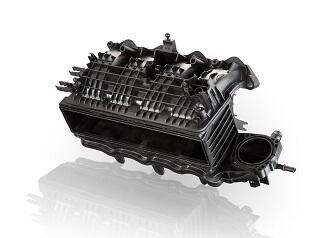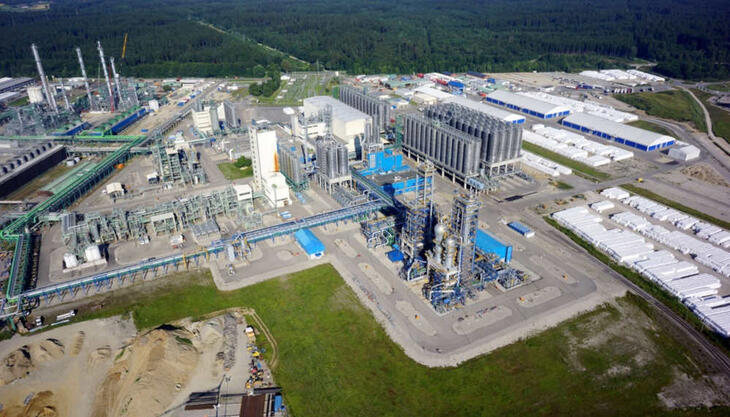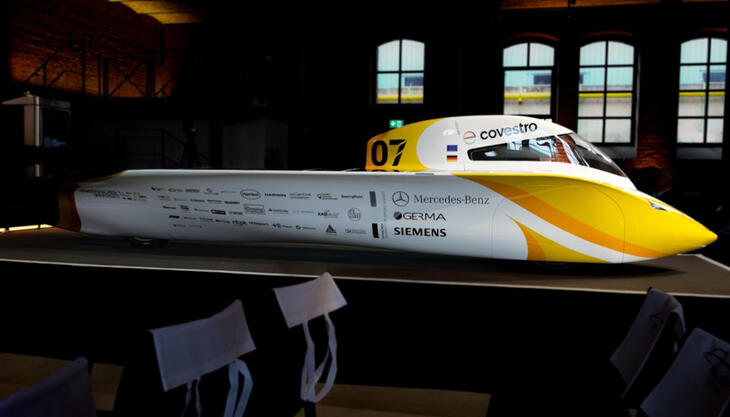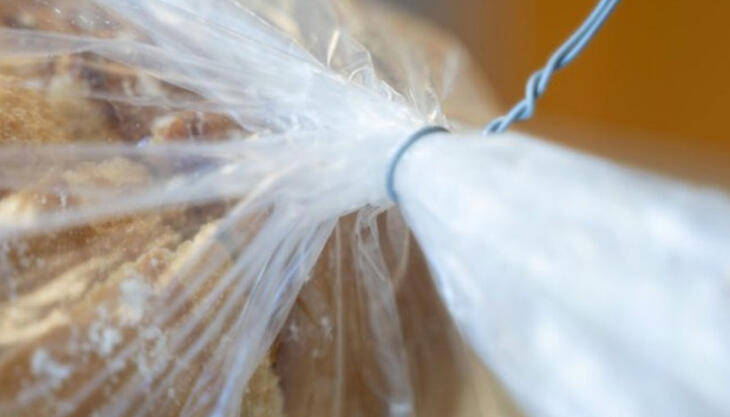Tailored polyamides for the charge-air duct in modern engines

The reductions in fuel consumption and emissions which are prescribed by law in many countries are forcing the automotive industry to act. Besides developing alternative drives, the optimization of traditional combustion engines continues to play a key role. Downsizing results in higher pres-sures and temperatures, especially in components that carry air behind the turbocharger. Basf is responding to this development in engine designs with a consistent portfolio of PA6 and PA66 grades that meet the higher demands on the materials, their mechanical properties and tempera-ture resistance. The company will present them at the K fair (Düsseldorf, October 19-26), in hall 5, booth C21/D21.
Depending on the base polymer and stabilisation system, the materials are resistant to heat aging up to 220°C and show excellent burst pressure and weld strength. This means the part developer can be provided with the optimum material for each of the different components in the charge-air duct that offers the best value for money. Selected grades are based on global specifications - They are supplied worldwide from local manufacturing facilities, with uniform material properties and a consistently high level of quality.
Basf offers polyamides for the various temperature requirements of the charge-air duct. The range comprises PA6, PA66 and PA66/6 grades with a glass fibre content between 30 and 50 percent. Ul-tramid B3WG6 GPX, a PA6 containing 30% glass fibres, has been newly added to the portfolio. It is resistant to temperatures up to 180°C and for a short time up to 200°C. Due to its excellent burst pressure and weld strength, it is suitable for air intake manifolds made from several parts. The up-per end of the temperature range is covered by Ultramid Endure, a specialty polyamide which can stand constant use temperatures of 220°C and peaks up to 240°C. The grades Ultramid Endure D3G7 with 35% glass fibre reinforcement and D3G10 with 50% glass fibre reinforcement are suitable for injection moulding. They are proven to work well in air intake manifolds of turbocharged diesel engines as well as in resonators and sensors. Well-known OEMs use Ultramid Endure D5G3 BM (with 15% glass fibres), which is suitable for blow moulding, in charge-air pipes. For temperatures be-tween 180°C and 210°C, the portfolio contains PA66 plastics with enhanced heat stabilisation. These include Ultramid A3W2G6 to G10 (with glass fibre reinforcements from 30 to 50%) for tem-peratures up to 190°C, e.g. in charge air cooler endcaps, and the new Ultramid A3W3G7 for tem-peratures up to 210°C.
In addition to the traditional storage of standard test specimens in a heating cabinet, which pro-vides a good reference point for choosing materials, dynamic and close-to-component tests are playing an increasingly important role. These include tests of fatigue strength on tensile bars sub-jected to varying stresses, determining the burst pressure of welded hollow bodies and pressure al-ternation tests at different application temperatures.
Welded components are frequently used in the engine. If the material has a lower glass fibre con-tent, the weldline can represent a weak point, particularly after aging. All of the grades in the port-folio display outstanding burst pressure and weld strength. They are particularly suitable for vibra-tion and hot gas welding. The weld strength was measured on the Ultrasim Weld Tester. The com-pany developed this complex test specimen in order to determine the fatigue strength of weldlines under various long-term loads. It also enables a more precise prediction of the part’s service life using Basf’s Ultrasim simulation tool. The simulation helps customers to create an optimum design for their components at an early stage of development, to reduce development loops and the amount of prototypes.
Compared to the previous standard product, the newly developed Ultramid B3WG6 GPX not only displays an initial burst pressure that is 25% higher. It also withstands four times as many alternat-ing pressure load cycles at 100°C. Ultramid A3W3G7, which is also new, fills in the gap between the Ultramid A3W2 grades and Ultramid Endure - The plastic shows very good mechanical properties even at constant use temperatures up to 210°C.

















